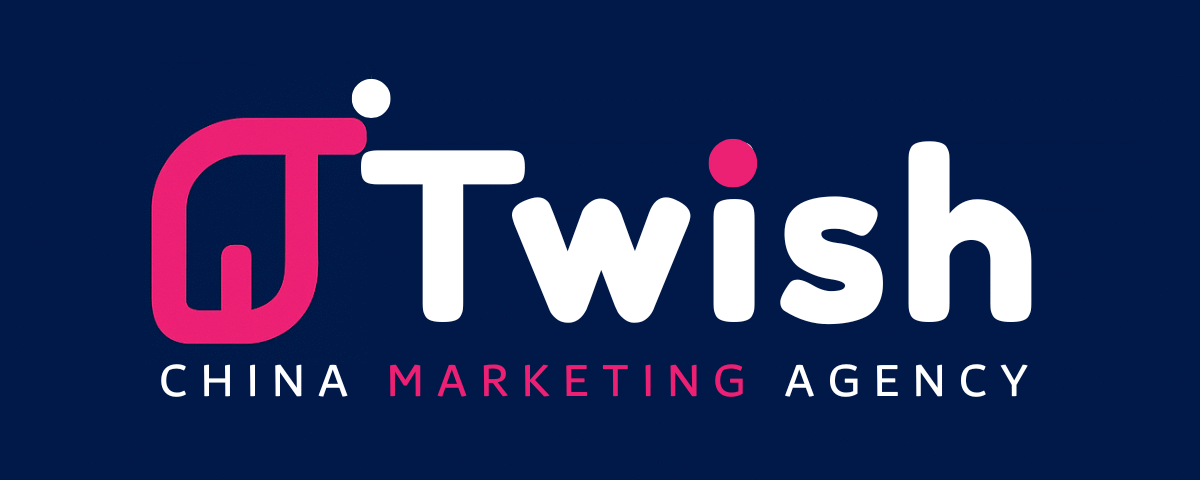China NEVs Insight: Is SU7 A Strong Rival To Model 3?
March 28th at 7 PM, the highly anticipated Xiaomi Electric Vehicle SU7 was officially launched in Beijing. This marks Lei Jun’s last entrepreneurial venture as CEO of Xiaomi Group, and it is also the live debut of Xiaomi Electric Vehicle. This quickly broke the 100 million viewership mark on the official Xiaomi live broadcast platform, setting a new industry record.
About 4 hours into the live broadcast, Xiaomi SU7 received over 10,000 major reservations in just 4 minutes, and over 20,000 in 7 minutes.

Those familiar with Xiaomi Group are undoubtedly acquainted with Lei Jun’s strategic industry layout, which spans from smartphones to smart home appliances and beyond. as well as the “Mi Fans” culture that Lei Jun has cultivated.
They are also likely to be well-versed in Xiaomi Group’s values and vision, where “cost-effectiveness” is almost synonymous with the brand, and this is no different for Xiaomi Electric Vehicle.
Lei Jun, March 28, 2024, Xiaomi Electric Vehicle SU7 Launch EventThe Xiaomi SU7 is a dream electric vehicle that carries all aspirations. From the beginning of its development, we set a goal: to create the best-looking, best-driving, and most intelligent sedan under 500,000 yuan, while also ensuring it is a high-quality vehicle!
Design Benchmarked Against Porsche, Performance Against Model 3
As the “King of Cost-Effectiveness,” Lei Jun has high standards for product positioning, benchmarking the appearance and performance against current market leaders in their respective fields.

The design language of Xiaomi SU7 is a bold attempt to enter the high-end market. From the streamlined body to the exquisite interior, every detail reflects Xiaomi’s pursuit of quality. Lei Jun mentioned at the launch event that the design inspiration for the SU7 partly comes from Porsche, and the introduction of this design philosophy gives the SU7 the visual capital to compete with high-end brands.
This design confidence is also reflected in the market positioning of the SU7—it is not just an electric vehicle but also a high-end product that represents the spirit of the Xiaomi brand.
In terms of performance, Xiaomi SU7 is not to be outdone. According to the information released at the launch event, the SU7 has outstanding performance in acceleration, endurance, and intelligent driving. Its acceleration time per 100 kilometers is comparable to the Model 3, and its endurance range has reached an industry-leading level.
What’s more worth mentioning is that the SU7 is equipped with Xiaomi’s self-developed intelligent driving system, the addition of which undoubtedly gives the SU7 the strength to compete with the Model 3 in terms of intelligence.

Why Benchmark Against Model 3?
At the launch of Xiaomi’s SU7, Lei Jun chose the Model 3 as a benchmark, not by chance. The Tesla Model 3, as a benchmark in the electric vehicle market, has an undeniable influence and market share. Lei Jun clearly proposed a comparison between the SU7 and the Model 3 at the launch event. This is a strategy and a display of wisdom. By directly comparing with the Model 3, Lei Jun not only provided consumers with an intuitive reference standard but also cleverly placed the SU7 alongside industry leaders, thereby enhancing the market position and brand image of the SU7.
Bringing out the configuration specification chart for comparison is also part of Lei Jun’s marketing strategy. This intuitive comparison allows consumers to see at a glance the advantages of the SU7 in terms of performance, configuration, and price. This strategy not only shows Xiaomi’s confidence in its own products but also respects consumers by providing transparent information, enabling them to make wiser choices.
In summary, Lei Jun’s benchmarking against the Model 3 at the launch event and the comparison through configuration specification charts is a well-considered market strategy. This not only helps to enhance the market recognition of Xiaomi’s SU7 but also helps to shape the brand image of Xiaomi as an emerging force in the field of electric vehicles. In this way, Lei Jun has successfully brought the SU7 into the spotlight of the market, giving consumers a more intuitive and comprehensive understanding of this emerging product.

Xiaomi SU7 Configuration and Market Positioning
The Xiaomi SU7 has dimensions of 4997mm/1963mm/1440mm, with a wheelbase of 3000mm. In terms of vehicle classification, the Xiaomi SU7 falls within the mid-to-large segment of the pure electric sedan market.
The main sales price range for the Xiaomi SU7 is between 200,000 to 300,000 yuan, aiming to reach a broad consumer base interested in mid-sized and large-sized electric sedans.

However, different automakers have varying approaches to these two markets. Tesla, for instance, only produces one model, the Model 3, which is positioned in the mid-sized car segment. On the other hand, Zeekr produces two models, the Zeekr 001 and Zeekr 007, which are positioned in the mid-to-large and mid-sized car segments, respectively.
Both Zeekr models are well-defined and priced reasonably, with their sales not affecting each other. The Xiaomi SU7 has an advantage in terms of size, and when priced similarly to its competitors, it has a certain advantage in sales.
Competitive Landscape of This New Energy Vehicle
From 2022 to 2024 (cumulative data for weeks 1-12), we can see from the sales volume proportion chart of pure electric vehicle models priced between 200K to 300K yuan in 29 cities that in 2022, mid-sized sedans accounted for 68% of sales. In 2023 and 2024, this market shifted to be primarily mid-sized SUVs, mainly due to Tesla Model Y’s price reduction, which entered this price range and significantly changed the market structure. In 2023 and 2024 (weeks 1-12), the market share for SUVs and sedans in this segment was 60% and 40%, respectively, with SUV demand exceeding that of sedans. In 2024 (weeks 1-12), new models entering this market segment include Zeekr 007, Volkswagen ID.7, Huawei Smart Selection S7, Chery Star Genesis, etc., further intensifying market competition.
After the launch of Xiaomi SU7, its main competitors in 29 cities are Tesla Model 3 and Zeekr’s 001 and 007, BMW i3, NIO ET5/ET5T, BYD Han EV, etc. The core competitiveness in this segmented market is price. The newly launched Zeekr Model 007 starts at 209,900 yuan, quickly climbing to the second-highest sales volume in this segmented market. Zeekr 001 stabilized sales by adjusting prices. After BYD Han EV reduced prices in March, the national cumulative sales volume for the first 12 weeks reached 12,500 units, with 6,800 units sold in 29 cities. Xiaomi SU7’s competitors stabilized sales volumes in different price ranges by adjusting retail prices, leaving little room for Xiaomi SU7 in terms of pricing. To succeed, Xiaomi SU7 needs to capture 20% market share in this segmented market in the first year of sales, That is, over 60,000 units annually. To stand out in the competition, Xiaomi automobile needs to provide differentiated advantages in terms of price, performance, brand, and service to attract the target consumer group.

Xiaomi Automobile Sales Strategy: Initial Network Coverage Expanded
Xiaomi SU7’s initial network coverage includes 29 cities, and the second batch of cities will select 10 out of 20 candidates. The 2023 car sales volume of the first batch of 29 cities covered by Xiaomi SU7 is 9.82 million units, accounting for 45% of the passenger car market share, of which new energy sales are nearly 4 million units, accounting for 42% of the overall new energy sales volume; pure electric vehicle sales are 2.59 million units, accounting for 53% of the overall pure electric vehicle sales volume; Tesla Model 3’s sales volume in these 29 cities is 116,000 units. The potential sales volume of Xiaomi SU7 in these 29 cities can refer to the sales volume of Tesla Model 3 in these cities.
Xiaomi initially establishes 59 sales outlets in 29 cities, which does not have a competitive advantage in terms of outlet numbers compared to rivals. Tesla has established 307 outlets (including sales showrooms, delivery centers, maintenance, etc.) In 29 cities, achieving a high delivery efficiency of nearly 116,000 new cars in 2023; BYD has 1,191 outlets in 29 cities, selling 85,000 new cars in 2023. Since the launch of the Zeekr brand in 2021, it has 171 outlets in 29 cities, selling 19,000 new cars in the first 12 weeks of 2024. These competing outlets each have their own characteristics, with Tesla’s single outlets having high sales efficiency, BYD’s extensive network coverage, and Zeekr selling both Zeekr 007 and Zeekr 001 models at the same outlet. In the early stages of the Xiaomi SU7 launch, the sales outlets are a weak point, and production needs to ramp up, overcoming production quality issues, which are challenges Xiaomi needs to address.
In summary, the market prospects for Xiaomi SU7 are full of challenges but also accompany great opportunities. By precise market positioning, innovative sales strategies, and continuous product optimization to meet consumer needs, Xiaomi can secure a place in the market.
Fans marketing is a timelessly effective tool for garnering positive reviews
Xiaomi has always been known for its dedication to its fans, having established the Xiaomi Community, which was a pioneer in user-operated communities for electronic consumer products. Many new product creations and iterations have stemmed from user suggestions.
On January 8, 2024, Xiaomi Automobile’s official Weibo account began to push the “Xiaomi Automobile Answers 100 Questions from Netizens” article in the form of a “serial” in three installments. It addressed the questions from netizens about the price, platform architecture, and motor development since the pre-release, and at the same time, to increase user participation and interactivity, a Xiaomi 14 Gulf Blue mobile phone was given away to a user who participated in reposting and commenting. This not only demonstrated Xiaomi Automobile’s care for its fans with practical actions but also strengthened the brand’s image of being fan-friendly, increasing brand reputation and attracting countless fans again.
Lei Jun also personally delivered the goods at the SU7 event site to pave the way, and consumers could also enjoy Lei Jun’s personal door opening and group photo, once again pushing its popularity to a climax and deepening consumers’ love for the Xiaomi brand.
For more detailed analysis of this Xiaomi Automobile SU7 marketing campaign, please refer to the following…

